Spinal Fusion Devices
Spinal decompression Devices
Spinal Stimulation Devices
Interbody Devices
Implantable Bone Grafts
Metal
Ceramics
Polymer
Biomaterials
Degenerative Disc Disease
Spinal Stenosis
Scoliosis
Spinal Trauma
Tumors
Hospitals
Ambulatory Surgical Centers
Orthopedic Clinics
Research Institutes
North America
Europe
South America
Asia Pacific
Middle East and Africa
North America Outlook (USD Billion, 2019-2035)
North America Spinal Implants Market by Product Type
Spinal Fusion Devices
Spinal decompression Devices
Spinal Stimulation Devices
Interbody Devices
Implantable Bone Grafts
North America Spinal Implants Market by Material Type
Metal
Ceramics
Polymer
Biomaterials
North America Spinal Implants Market by Application Type
Degenerative Disc Disease
Spinal Stenosis
Scoliosis
Spinal Trauma
Tumors
North America Spinal Implants Market by End User Type
Hospitals
Ambulatory Surgical Centers
Orthopedic Clinics
Research Institutes
North America Spinal Implants Market by Regional Type
US
Canada
US Outlook (USD Billion, 2019-2035)
US Spinal Implants Market by Product Type
Spinal Fusion Devices
Spinal decompression Devices
Spinal Stimulation Devices
Interbody Devices
Implantable Bone Grafts
US Spinal Implants Market by Material Type
Metal
Ceramics
Polymer
Biomaterials
US Spinal Implants Market by Application Type
Degenerative Disc Disease
Spinal Stenosis
Scoliosis
Spinal Trauma
Tumors
US Spinal Implants Market by End User Type
Hospitals
Ambulatory Surgical Centers
Orthopedic Clinics
Research Institutes
CANADA Outlook (USD Billion, 2019-2035)
CANADA Spinal Implants Market by Product Type
Spinal Fusion Devices
Spinal decompression Devices
Spinal Stimulation Devices
Interbody Devices
Implantable Bone Grafts
CANADA Spinal Implants Market by Material Type
Metal
Ceramics
Polymer
Biomaterials
CANADA Spinal Implants Market by Application Type
Degenerative Disc Disease
Spinal Stenosis
Scoliosis
Spinal Trauma
Tumors
CANADA Spinal Implants Market by End User Type
Hospitals
Ambulatory Surgical Centers
Orthopedic Clinics
Research Institutes
Europe Outlook (USD Billion, 2019-2035)
Europe Spinal Implants Market by Product Type
Spinal Fusion Devices
Spinal decompression Devices
Spinal Stimulation Devices
Interbody Devices
Implantable Bone Grafts
Europe Spinal Implants Market by Material Type
Metal
Ceramics
Polymer
Biomaterials
Europe Spinal Implants Market by Application Type
Degenerative Disc Disease
Spinal Stenosis
Scoliosis
Spinal Trauma
Tumors
Europe Spinal Implants Market by End User Type
Hospitals
Ambulatory Surgical Centers
Orthopedic Clinics
Research Institutes
Europe Spinal Implants Market by Regional Type
Germany
UK
France
Russia
Italy
Spain
Rest of Europe
GERMANY Outlook (USD Billion, 2019-2035)
GERMANY Spinal Implants Market by Product Type
Spinal Fusion Devices
Spinal decompression Devices
Spinal Stimulation Devices
Interbody Devices
Implantable Bone Grafts
GERMANY Spinal Implants Market by Material Type
Metal
Ceramics
Polymer
Biomaterials
GERMANY Spinal Implants Market by Application Type
Degenerative Disc Disease
Spinal Stenosis
Scoliosis
Spinal Trauma
Tumors
GERMANY Spinal Implants Market by End User Type
Hospitals
Ambulatory Surgical Centers
Orthopedic Clinics
Research Institutes
UK Outlook (USD Billion, 2019-2035)
UK Spinal Implants Market by Product Type
Spinal Fusion Devices
Spinal decompression Devices
Spinal Stimulation Devices
Interbody Devices
Implantable Bone Grafts
UK Spinal Implants Market by Material Type
Metal
Ceramics
Polymer
Biomaterials
UK Spinal Implants Market by Application Type
Degenerative Disc Disease
Spinal Stenosis
Scoliosis
Spinal Trauma
Tumors
UK Spinal Implants Market by End User Type
Hospitals
Ambulatory Surgical Centers
Orthopedic Clinics
Research Institutes
FRANCE Outlook (USD Billion, 2019-2035)
FRANCE Spinal Implants Market by Product Type
Spinal Fusion Devices
Spinal decompression Devices
Spinal Stimulation Devices
Interbody Devices
Implantable Bone Grafts
FRANCE Spinal Implants Market by Material Type
Metal
Ceramics
Polymer
Biomaterials
FRANCE Spinal Implants Market by Application Type
Degenerative Disc Disease
Spinal Stenosis
Scoliosis
Spinal Trauma
Tumors
FRANCE Spinal Implants Market by End User Type
Hospitals
Ambulatory Surgical Centers
Orthopedic Clinics
Research Institutes
RUSSIA Outlook (USD Billion, 2019-2035)
RUSSIA Spinal Implants Market by Product Type
Spinal Fusion Devices
Spinal decompression Devices
Spinal Stimulation Devices
Interbody Devices
Implantable Bone Grafts
RUSSIA Spinal Implants Market by Material Type
Metal
Ceramics
Polymer
Biomaterials
RUSSIA Spinal Implants Market by Application Type
Degenerative Disc Disease
Spinal Stenosis
Scoliosis
Spinal Trauma
Tumors
RUSSIA Spinal Implants Market by End User Type
Hospitals
Ambulatory Surgical Centers
Orthopedic Clinics
Research Institutes
ITALY Outlook (USD Billion, 2019-2035)
ITALY Spinal Implants Market by Product Type
Spinal Fusion Devices
Spinal decompression Devices
Spinal Stimulation Devices
Interbody Devices
Implantable Bone Grafts
ITALY Spinal Implants Market by Material Type
Metal
Ceramics
Polymer
Biomaterials
ITALY Spinal Implants Market by Application Type
Degenerative Disc Disease
Spinal Stenosis
Scoliosis
Spinal Trauma
Tumors
ITALY Spinal Implants Market by End User Type
Hospitals
Ambulatory Surgical Centers
Orthopedic Clinics
Research Institutes
SPAIN Outlook (USD Billion, 2019-2035)
SPAIN Spinal Implants Market by Product Type
Spinal Fusion Devices
Spinal decompression Devices
Spinal Stimulation Devices
Interbody Devices
Implantable Bone Grafts
SPAIN Spinal Implants Market by Material Type
Metal
Ceramics
Polymer
Biomaterials
SPAIN Spinal Implants Market by Application Type
Degenerative Disc Disease
Spinal Stenosis
Scoliosis
Spinal Trauma
Tumors
SPAIN Spinal Implants Market by End User Type
Hospitals
Ambulatory Surgical Centers
Orthopedic Clinics
Research Institutes
REST OF EUROPE Outlook (USD Billion, 2019-2035)
REST OF EUROPE Spinal Implants Market by Product Type
Spinal Fusion Devices
Spinal decompression Devices
Spinal Stimulation Devices
Interbody Devices
Implantable Bone Grafts
REST OF EUROPE Spinal Implants Market by Material Type
Metal
Ceramics
Polymer
Biomaterials
REST OF EUROPE Spinal Implants Market by Application Type
Degenerative Disc Disease
Spinal Stenosis
Scoliosis
Spinal Trauma
Tumors
REST OF EUROPE Spinal Implants Market by End User Type
Hospitals
Ambulatory Surgical Centers
Orthopedic Clinics
Research Institutes
APAC Outlook (USD Billion, 2019-2035)
APAC Spinal Implants Market by Product Type
Spinal Fusion Devices
Spinal decompression Devices
Spinal Stimulation Devices
Interbody Devices
Implantable Bone Grafts
APAC Spinal Implants Market by Material Type
Metal
Ceramics
Polymer
Biomaterials
APAC Spinal Implants Market by Application Type
Degenerative Disc Disease
Spinal Stenosis
Scoliosis
Spinal Trauma
Tumors
APAC Spinal Implants Market by End User Type
Hospitals
Ambulatory Surgical Centers
Orthopedic Clinics
Research Institutes
APAC Spinal Implants Market by Regional Type
China
India
Japan
South Korea
Malaysia
Thailand
Indonesia
Rest of APAC
CHINA Outlook (USD Billion, 2019-2035)
CHINA Spinal Implants Market by Product Type
Spinal Fusion Devices
Spinal decompression Devices
Spinal Stimulation Devices
Interbody Devices
Implantable Bone Grafts
CHINA Spinal Implants Market by Material Type
Metal
Ceramics
Polymer
Biomaterials
CHINA Spinal Implants Market by Application Type
Degenerative Disc Disease
Spinal Stenosis
Scoliosis
Spinal Trauma
Tumors
CHINA Spinal Implants Market by End User Type
Hospitals
Ambulatory Surgical Centers
Orthopedic Clinics
Research Institutes
INDIA Outlook (USD Billion, 2019-2035)
INDIA Spinal Implants Market by Product Type
Spinal Fusion Devices
Spinal decompression Devices
Spinal Stimulation Devices
Interbody Devices
Implantable Bone Grafts
INDIA Spinal Implants Market by Material Type
Metal
Ceramics
Polymer
Biomaterials
INDIA Spinal Implants Market by Application Type
Degenerative Disc Disease
Spinal Stenosis
Scoliosis
Spinal Trauma
Tumors
INDIA Spinal Implants Market by End User Type
Hospitals
Ambulatory Surgical Centers
Orthopedic Clinics
Research Institutes
JAPAN Outlook (USD Billion, 2019-2035)
JAPAN Spinal Implants Market by Product Type
Spinal Fusion Devices
Spinal decompression Devices
Spinal Stimulation Devices
Interbody Devices
Implantable Bone Grafts
JAPAN Spinal Implants Market by Material Type
Metal
Ceramics
Polymer
Biomaterials
JAPAN Spinal Implants Market by Application Type
Degenerative Disc Disease
Spinal Stenosis
Scoliosis
Spinal Trauma
Tumors
JAPAN Spinal Implants Market by End User Type
Hospitals
Ambulatory Surgical Centers
Orthopedic Clinics
Research Institutes
SOUTH KOREA Outlook (USD Billion, 2019-2035)
SOUTH KOREA Spinal Implants Market by Product Type
Spinal Fusion Devices
Spinal decompression Devices
Spinal Stimulation Devices
Interbody Devices
Implantable Bone Grafts
SOUTH KOREA Spinal Implants Market by Material Type
Metal
Ceramics
Polymer
Biomaterials
SOUTH KOREA Spinal Implants Market by Application Type
Degenerative Disc Disease
Spinal Stenosis
Scoliosis
Spinal Trauma
Tumors
SOUTH KOREA Spinal Implants Market by End User Type
Hospitals
Ambulatory Surgical Centers
Orthopedic Clinics
Research Institutes
MALAYSIA Outlook (USD Billion, 2019-2035)
MALAYSIA Spinal Implants Market by Product Type
Spinal Fusion Devices
Spinal decompression Devices
Spinal Stimulation Devices
Interbody Devices
Implantable Bone Grafts
MALAYSIA Spinal Implants Market by Material Type
Metal
Ceramics
Polymer
Biomaterials
MALAYSIA Spinal Implants Market by Application Type
Degenerative Disc Disease
Spinal Stenosis
Scoliosis
Spinal Trauma
Tumors
MALAYSIA Spinal Implants Market by End User Type
Hospitals
Ambulatory Surgical Centers
Orthopedic Clinics
Research Institutes
THAILAND Outlook (USD Billion, 2019-2035)
THAILAND Spinal Implants Market by Product Type
Spinal Fusion Devices
Spinal decompression Devices
Spinal Stimulation Devices
Interbody Devices
Implantable Bone Grafts
THAILAND Spinal Implants Market by Material Type
Metal
Ceramics
Polymer
Biomaterials
THAILAND Spinal Implants Market by Application Type
Degenerative Disc Disease
Spinal Stenosis
Scoliosis
Spinal Trauma
Tumors
THAILAND Spinal Implants Market by End User Type
Hospitals
Ambulatory Surgical Centers
Orthopedic Clinics
Research Institutes
INDONESIA Outlook (USD Billion, 2019-2035)
INDONESIA Spinal Implants Market by Product Type
Spinal Fusion Devices
Spinal decompression Devices
Spinal Stimulation Devices
Interbody Devices
Implantable Bone Grafts
INDONESIA Spinal Implants Market by Material Type
Metal
Ceramics
Polymer
Biomaterials
INDONESIA Spinal Implants Market by Application Type
Degenerative Disc Disease
Spinal Stenosis
Scoliosis
Spinal Trauma
Tumors
INDONESIA Spinal Implants Market by End User Type
Hospitals
Ambulatory Surgical Centers
Orthopedic Clinics
Research Institutes
REST OF APAC Outlook (USD Billion, 2019-2035)
REST OF APAC Spinal Implants Market by Product Type
Spinal Fusion Devices
Spinal decompression Devices
Spinal Stimulation Devices
Interbody Devices
Implantable Bone Grafts
REST OF APAC Spinal Implants Market by Material Type
Metal
Ceramics
Polymer
Biomaterials
REST OF APAC Spinal Implants Market by Application Type
Degenerative Disc Disease
Spinal Stenosis
Scoliosis
Spinal Trauma
Tumors
REST OF APAC Spinal Implants Market by End User Type
Hospitals
Ambulatory Surgical Centers
Orthopedic Clinics
Research Institutes
South America Outlook (USD Billion, 2019-2035)
South America Spinal Implants Market by Product Type
Spinal Fusion Devices
Spinal decompression Devices
Spinal Stimulation Devices
Interbody Devices
Implantable Bone Grafts
South America Spinal Implants Market by Material Type
Metal
Ceramics
Polymer
Biomaterials
South America Spinal Implants Market by Application Type
Degenerative Disc Disease
Spinal Stenosis
Scoliosis
Spinal Trauma
Tumors
South America Spinal Implants Market by End User Type
Hospitals
Ambulatory Surgical Centers
Orthopedic Clinics
Research Institutes
South America Spinal Implants Market by Regional Type
Brazil
Mexico
Argentina
Rest of South America
BRAZIL Outlook (USD Billion, 2019-2035)
BRAZIL Spinal Implants Market by Product Type
Spinal Fusion Devices
Spinal decompression Devices
Spinal Stimulation Devices
Interbody Devices
Implantable Bone Grafts
BRAZIL Spinal Implants Market by Material Type
Metal
Ceramics
Polymer
Biomaterials
BRAZIL Spinal Implants Market by Application Type
Degenerative Disc Disease
Spinal Stenosis
Scoliosis
Spinal Trauma
Tumors
BRAZIL Spinal Implants Market by End User Type
Hospitals
Ambulatory Surgical Centers
Orthopedic Clinics
Research Institutes
MEXICO Outlook (USD Billion, 2019-2035)
MEXICO Spinal Implants Market by Product Type
Spinal Fusion Devices
Spinal decompression Devices
Spinal Stimulation Devices
Interbody Devices
Implantable Bone Grafts
MEXICO Spinal Implants Market by Material Type
Metal
Ceramics
Polymer
Biomaterials
MEXICO Spinal Implants Market by Application Type
Degenerative Disc Disease
Spinal Stenosis
Scoliosis
Spinal Trauma
Tumors
MEXICO Spinal Implants Market by End User Type
Hospitals
Ambulatory Surgical Centers
Orthopedic Clinics
Research Institutes
ARGENTINA Outlook (USD Billion, 2019-2035)
ARGENTINA Spinal Implants Market by Product Type
Spinal Fusion Devices
Spinal decompression Devices
Spinal Stimulation Devices
Interbody Devices
Implantable Bone Grafts
ARGENTINA Spinal Implants Market by Material Type
Metal
Ceramics
Polymer
Biomaterials
ARGENTINA Spinal Implants Market by Application Type
Degenerative Disc Disease
Spinal Stenosis
Scoliosis
Spinal Trauma
Tumors
ARGENTINA Spinal Implants Market by End User Type
Hospitals
Ambulatory Surgical Centers
Orthopedic Clinics
Research Institutes
REST OF SOUTH AMERICA Outlook (USD Billion, 2019-2035)
REST OF SOUTH AMERICA Spinal Implants Market by Product Type
Spinal Fusion Devices
Spinal decompression Devices
Spinal Stimulation Devices
Interbody Devices
Implantable Bone Grafts
REST OF SOUTH AMERICA Spinal Implants Market by Material Type
Metal
Ceramics
Polymer
Biomaterials
REST OF SOUTH AMERICA Spinal Implants Market by Application Type
Degenerative Disc Disease
Spinal Stenosis
Scoliosis
Spinal Trauma
Tumors
REST OF SOUTH AMERICA Spinal Implants Market by End User Type
Hospitals
Ambulatory Surgical Centers
Orthopedic Clinics
Research Institutes
MEA Outlook (USD Billion, 2019-2035)
MEA Spinal Implants Market by Product Type
Spinal Fusion Devices
Spinal decompression Devices
Spinal Stimulation Devices
Interbody Devices
Implantable Bone Grafts
MEA Spinal Implants Market by Material Type
Metal
Ceramics
Polymer
Biomaterials
MEA Spinal Implants Market by Application Type
Degenerative Disc Disease
Spinal Stenosis
Scoliosis
Spinal Trauma
Tumors
MEA Spinal Implants Market by End User Type
Hospitals
Ambulatory Surgical Centers
Orthopedic Clinics
Research Institutes
MEA Spinal Implants Market by Regional Type
GCC Countries
South Africa
Rest of MEA
GCC COUNTRIES Outlook (USD Billion, 2019-2035)
GCC COUNTRIES Spinal Implants Market by Product Type
Spinal Fusion Devices
Spinal decompression Devices
Spinal Stimulation Devices
Interbody Devices
Implantable Bone Grafts
GCC COUNTRIES Spinal Implants Market by Material Type
Metal
Ceramics
Polymer
Biomaterials
GCC COUNTRIES Spinal Implants Market by Application Type
Degenerative Disc Disease
Spinal Stenosis
Scoliosis
Spinal Trauma
Tumors
GCC COUNTRIES Spinal Implants Market by End User Type
Hospitals
Ambulatory Surgical Centers
Orthopedic Clinics
Research Institutes
SOUTH AFRICA Outlook (USD Billion, 2019-2035)
SOUTH AFRICA Spinal Implants Market by Product Type
Spinal Fusion Devices
Spinal decompression Devices
Spinal Stimulation Devices
Interbody Devices
Implantable Bone Grafts
SOUTH AFRICA Spinal Implants Market by Material Type
Metal
Ceramics
Polymer
Biomaterials
SOUTH AFRICA Spinal Implants Market by Application Type
Degenerative Disc Disease
Spinal Stenosis
Scoliosis
Spinal Trauma
Tumors
SOUTH AFRICA Spinal Implants Market by End User Type
Hospitals
Ambulatory Surgical Centers
Orthopedic Clinics
Research Institutes
REST OF MEA Outlook (USD Billion, 2019-2035)
REST OF MEA Spinal Implants Market by Product Type
Spinal Fusion Devices
Spinal decompression Devices
Spinal Stimulation Devices
Interbody Devices
Implantable Bone Grafts
REST OF MEA Spinal Implants Market by Material Type
Metal
Ceramics
Polymer
Biomaterials
REST OF MEA Spinal Implants Market by Application Type
Degenerative Disc Disease
Spinal Stenosis
Scoliosis
Spinal Trauma
Tumors
REST OF MEA Spinal Implants Market by End User Type
Hospitals
Ambulatory Surgical Centers
Orthopedic Clinics
Research Institutes
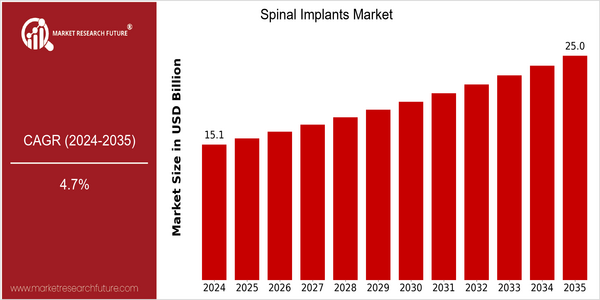
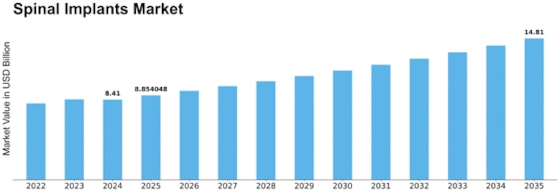

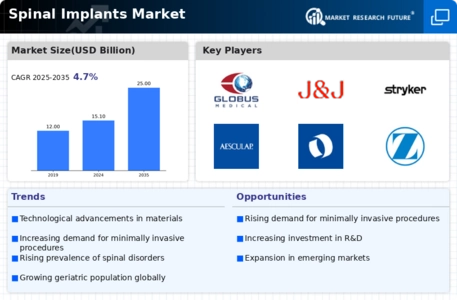
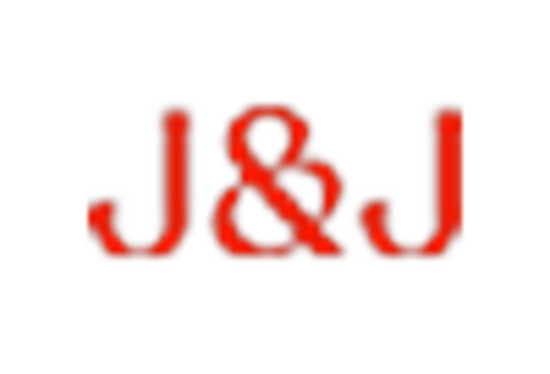


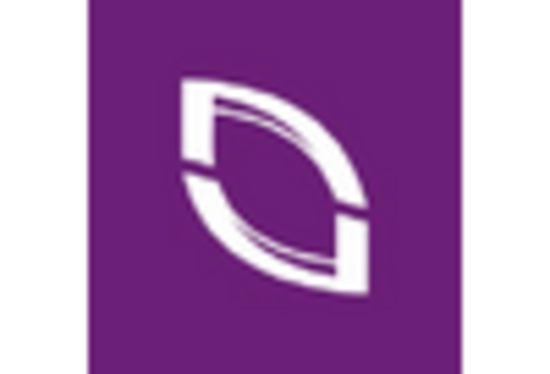
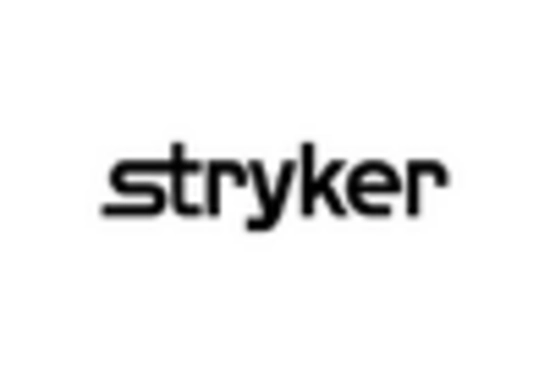
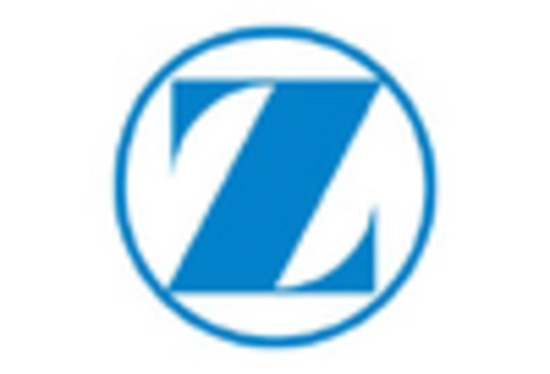

Leave a Comment